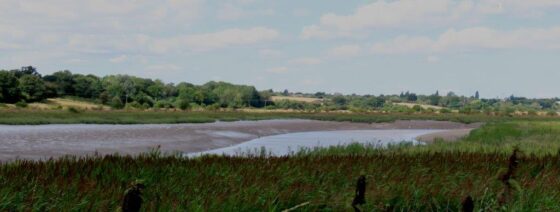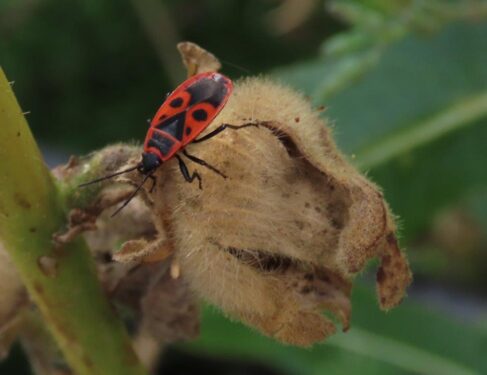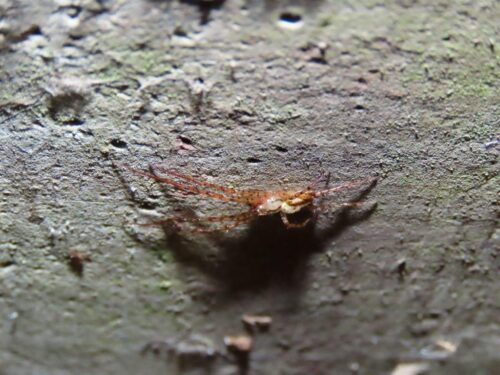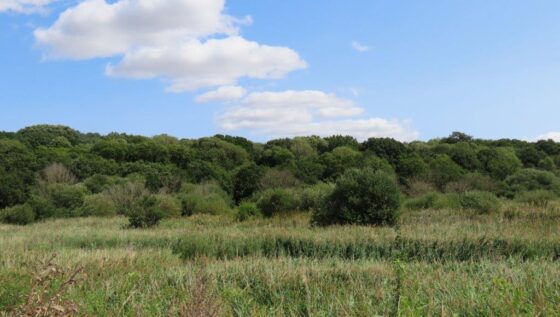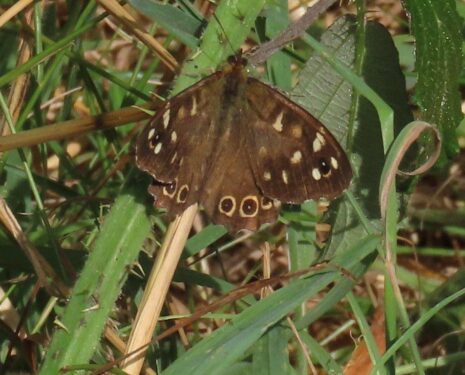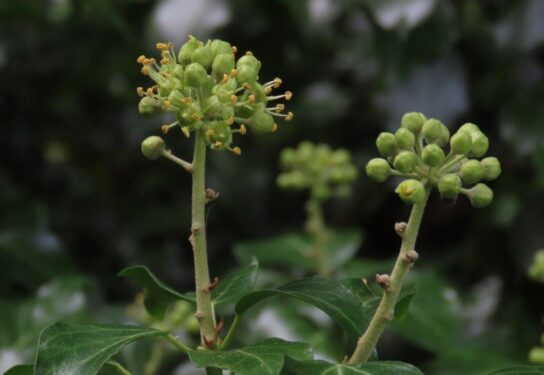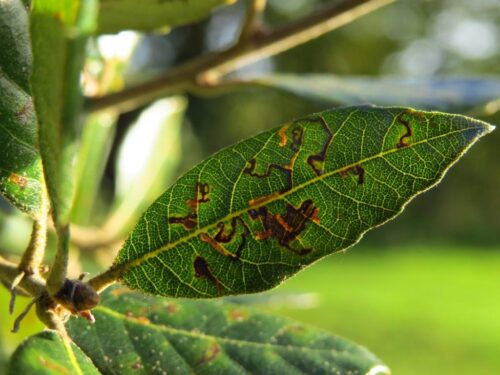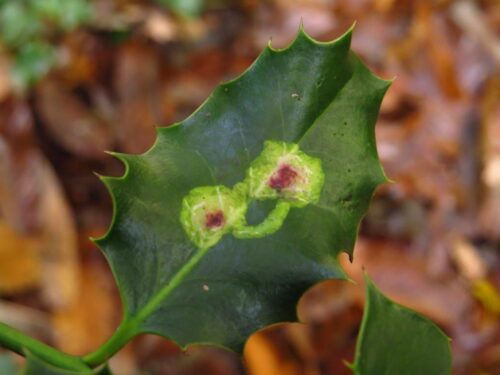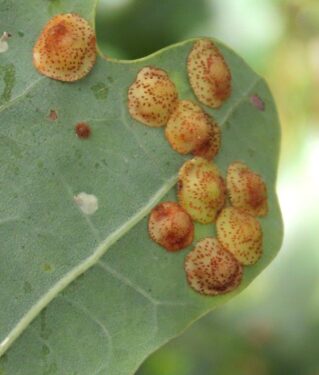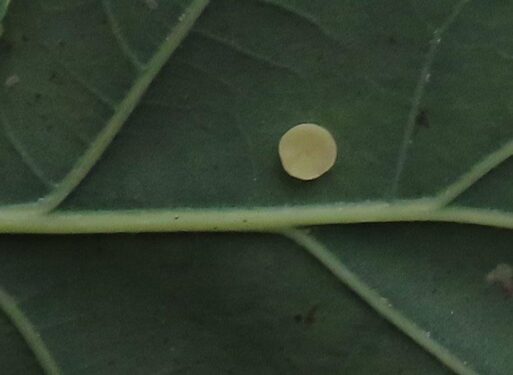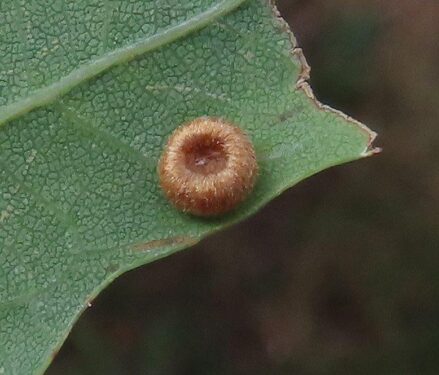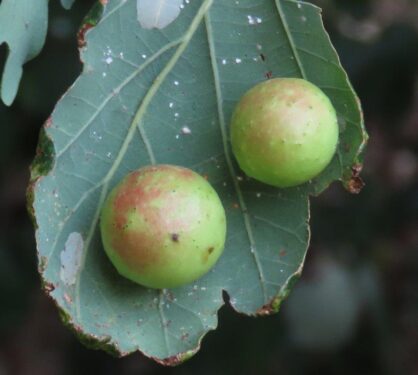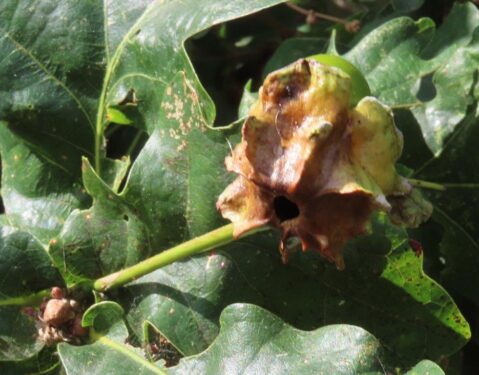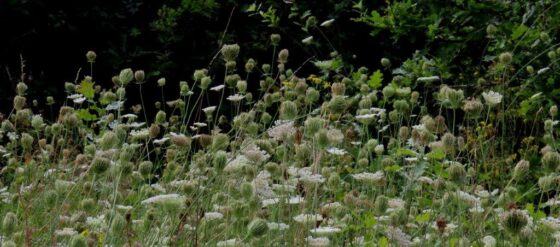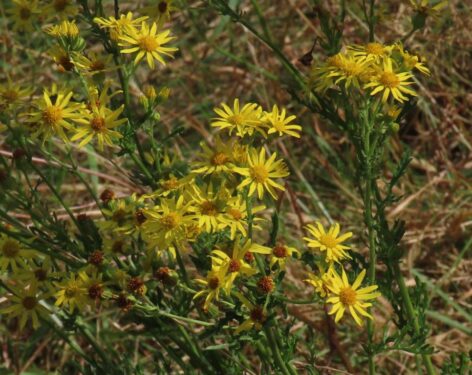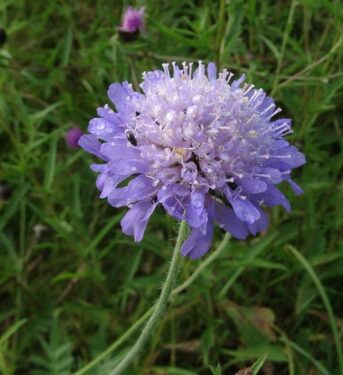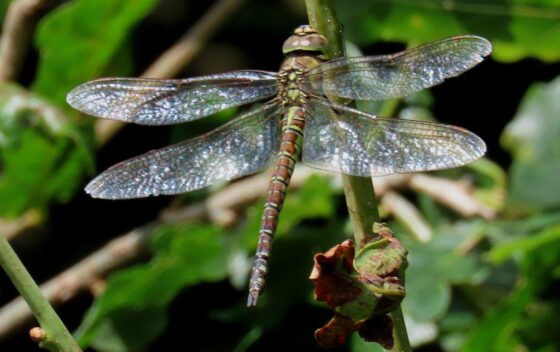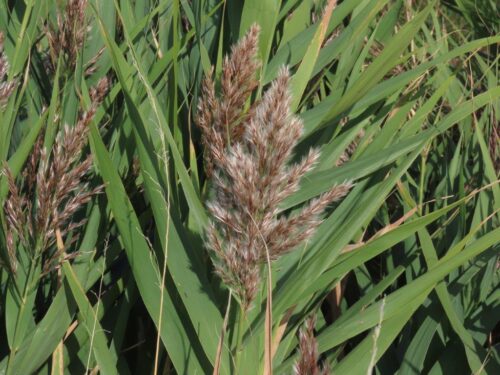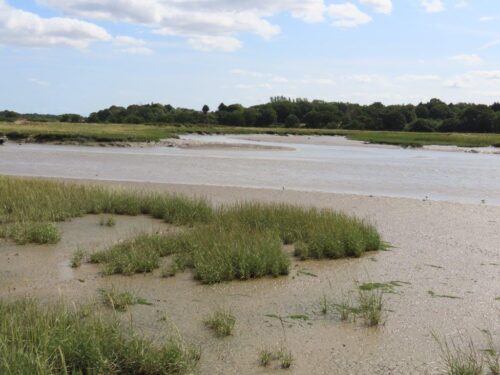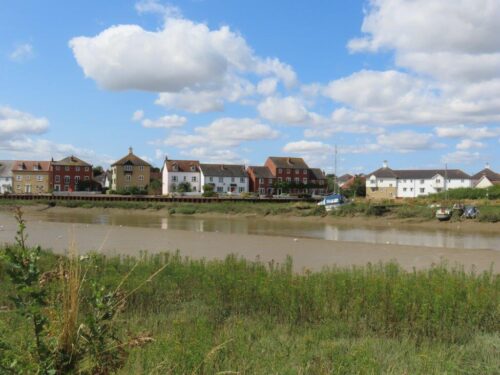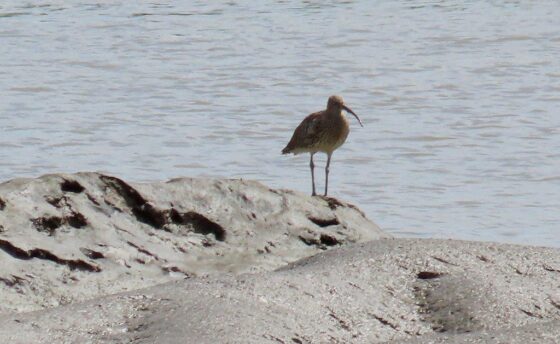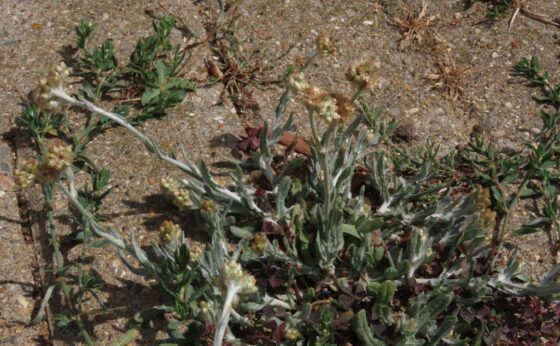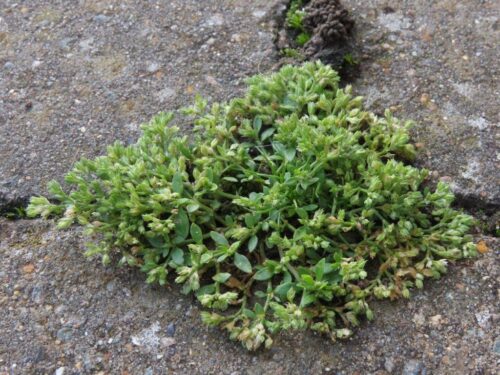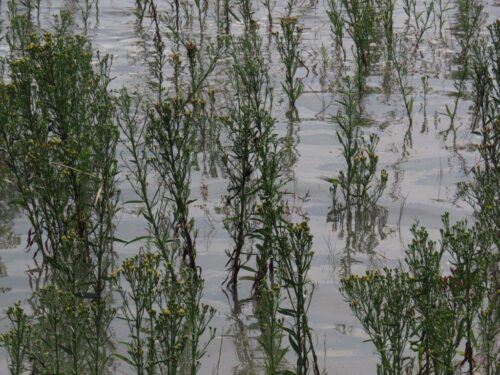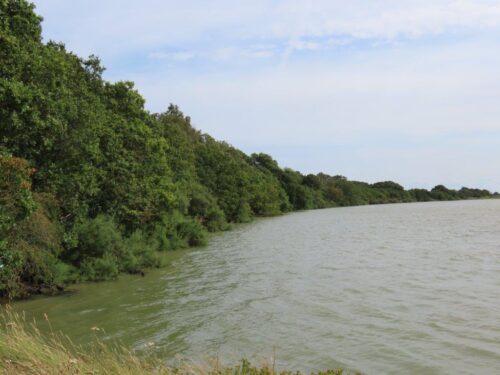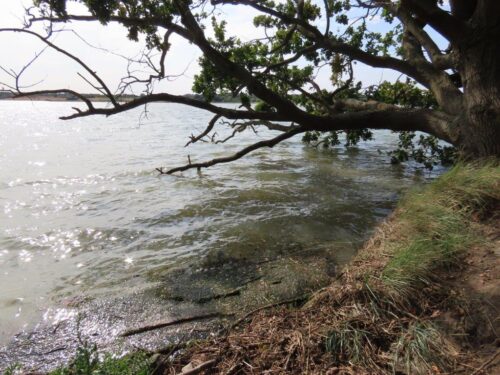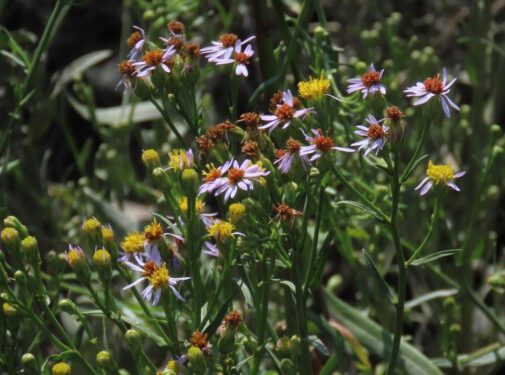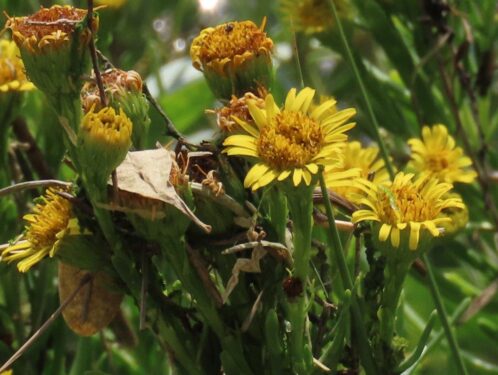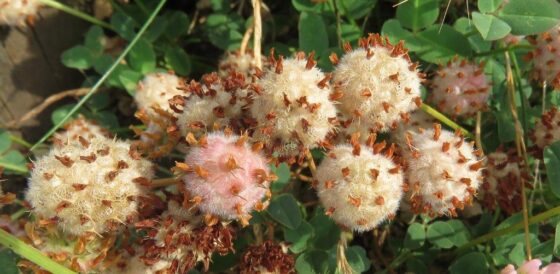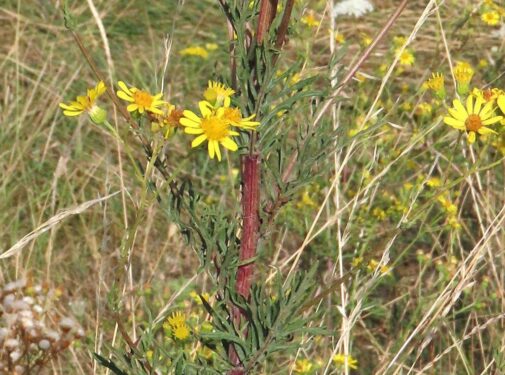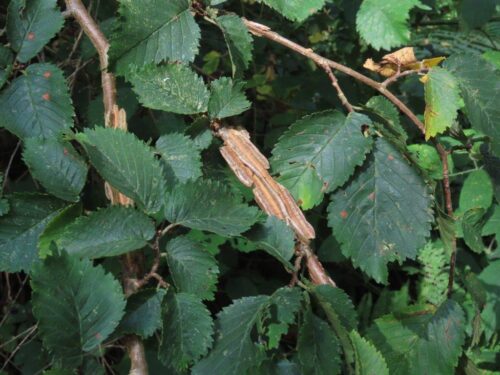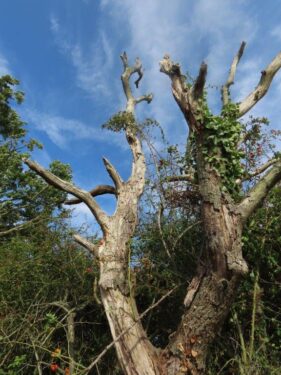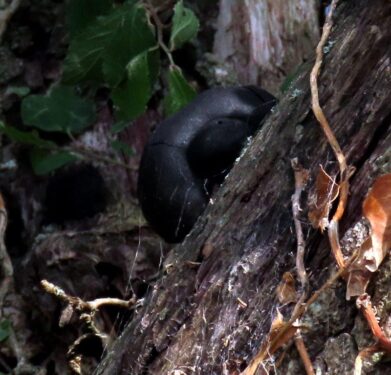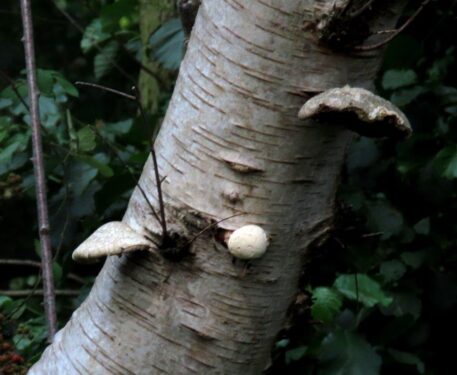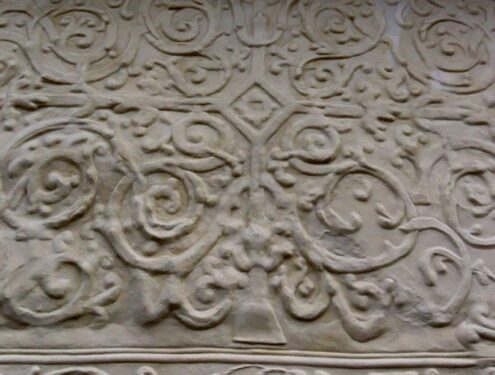As the full group assembled at Wivenhoe Station, things started too look up. The last vestiges of overnight cloud and rain were clearing away eastwards, although the wind was pretty rough, as indeed it remained all day. As the sun evaporated the moisture, humidity increased, and it turned into a very pleasant, hot day indeed.
Our varied day began well with a couple of ‘hot off the presses’ sightings. In the station community garden, Firebugs were eating the Hollyhock seeds. Until about five years ago only fleetingly resident in the UK, despite their abundance on the continent, they colonized the Harwich area (presumably via the port), and since then have consolidated and spread. They reached (or at least were found in) Wivenhoe only a week ago.
Then in the railway underpass, we found European Cave Spiders. So far as is known, this is the only site in north Essex for the species, and it has been known here for only about three months.
Our morning walk took in all three sections of the Colne Local Nature Reserve. Apart from wandering bands of Blue, Great and Coal Tits, an occasional Great Spotted Woodpecker ‘chicking’ and a young Sparrowhawk mewling, the strong wind kept things rather quiet.
But in more sheltered rides and clearings, Speckled Woods were taking advantage of the sun and Ivy, the plant that prepares our wildlife for winter as pretty much the last nectar and pollen source of the year, was just bursting out.
Leaf miners are always there to find, whatever the weather, and we looked at both Holm Oak (a moth) and Holly (a fly)…
… while galls provided hours of fun, searching the leaves for spangles, smooth spangles, silk buttons and cherries, with knoppers on the acorns.
Out into Lower Lodge, the meadows looking a bit forlorn after the past six weeks of near-total drought and searing temeperatures, the main pollen and nectar sources were Wild Carrot and Common Ragwort along with the last few Field Scabious, although the wind largely kept the insects down …
… except in the scrub-sheltered areas where there was plenty of dragonfly activity, with Common Darters flycatching, Migrant and Southern Hawkers hawking and a female Southern Migrant Hawker (another relatively new arrival in these parts some three years ago) perching.
The third section of the Local Nature Reserve was Ferry Marsh, skirted by the elevated pathway on the seawall. But again, little in the way of bird activity given the wind which rather than creating a gentle psithurism was more like the roar of the wild as it swept through the stands of Common Reed.
But turning seaward, there were birds: Black-headed Gulls, a few Redshanks and Black-tailed Godwits and single Cormorant and Curlew on the half-exposed mudbanks.
Then it was along the Wivenhoe waterfront, with a sheltered and shady spot for lunch, and chance to see the two botanical specialities of the block-paving, Jersey Cudweed along West Quay and Four-leaved Allseed around the Shipyard.
Our afternoon walk was much more exposed, heading downstream into the open estuary; the full afternoon sun and a reducing wind made for a rather hot time. There were very few waterbirds to be seen, due to a combination of the time of year, a very high spring tide and some noisy aerial activity from the Clacton Airshow. And especially the sometimes illegal and always antisocial presence of the ‘Romford Navy’ playing on their jet-skis…
But when it was quiet it was truly sublime, the gently lapping wavelets and squawking gulls complementing the silence perfectly. Time to take enjoy the saltmarsh in flower, with both Sea Aster and Golden Samphire looking especially good.
The seawall itself had fruiting Strawberry Clover and more ragwort, but this time mostly the lemon-yellow, greyish narrow-leaved grazing marsh specialist Hoary Ragwort.
And lingering in the welcome shade of Grange Wood, there was plenty of time to examine the Small-leaved Elms, both living suckers and dead trees. King Alfred’s Cakes on the latter were rather unexpected as this fungus normally grows on Ash, while Silver Birches had the much more expected Birch Brackets.
All that was left was to wander back through Wivenhoe, some buzzing Ivy bushes and splendid pargeting on the Garrison House rounding off a full, fun and diverse day.
